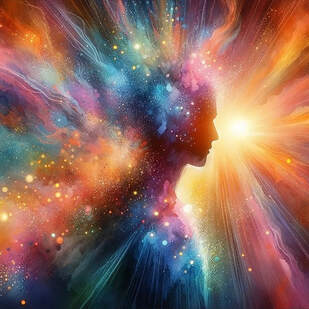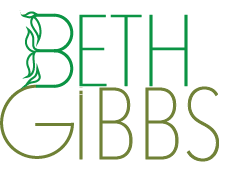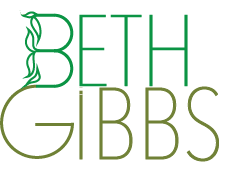ENLIGHTEN UP! a blogSelf-awareness stories: lighting our way to clarity, contentment and resilience in a complicated world.
|
 In this post I’m going to recommend a few books that focus on self-awareness and self-help. They are designed to empower your progress on the all-important internal wisdom journey. When we step on this path we learn to make conscious choices for needed change, choose to remain the same with full awareness of the consequences or find a measure of acceptance and peace of mind if no change is possible.  Sleep Simplified addresses a basic human necessity – sleep. Monica Le Baron, is a bilingual sleep coach and certified yoga therapist who specializes in helping women with sleep disorders get a good night’s rest. Her passion for helping others was sparked after she burned out at her corporate job and used yoga-based techniques on herself to heal from insomnia, chronic pain, anxiety and stress. She reminds us that sleep troubles don’t typically start in the bedroom; they’re just the tip of the iceberg and an indication that something else is going wrong. She helps clients identify the root causes of their sleep troubles, implement effective changes, and create lasting habits that lead to better sleep. These lasting habits start by developing an ideal night routine to help you fall asleep effortlessly. This book offers five practical tips for helping you get those needed eight hours of sleep a night. The steps are:
If sleep issues are impacting your life and health, Monica’s book and coaching program may help. You’ll find more about what Monica is up to these days here: https://monicalebaron.com  From the Boxing Ring to the Ashram is an award-winning self-help book that inspires readers to become their healthiest and happiest in as little as ten minutes a day. Filled with practical, adaptable tips for boosting overall well-being, the book offers a diverse range of advice from twelve of Deborah’s mentors and teachers. Deborah’s book spotlights easy-to-implement tips for PTSD, anxiety, stress, depression, chronic pain, digestive disorders, and more. Her approach helps the reader adapt and adopt comfortable habits to instill a balance between physical, emotional, or spiritual health. You’ll read about twelve life lessons, twelve experts and twelve unconventional life paths dotted with challenges along the way. Dr. Vasant Lad, BAMS, MASc., founder of The Ayurvedic Institute, writes this in his endorsement, “Deborah Charnes has brought ancient timeless wisdom into the most practical and clinical application. This is a wonderful discipline to integrate the healing of the body, mind, and spirit through mindfulness, yoga, and magic of laughter. I think this book will help every reader change his or her life.” Committed to helping others be their healthiest and happiest, Deborah has written 500 articles on holistic well-being, and she hosts a weekly book club on IGTV and Facebook Live. You can find more information on Deborah and her work here: https://linktr.ee/Deborahcharnes  April Goff Brown’s book, Journey to Your SELF, was born from her core beliefs, which are:
With those core beliefs at the forefront of her life, April has written a guide to help the reader embrace their true self and express their unique potential. Her program uses the 64 gates of Human Design as the roadmap for personal growth and transformation. The book describes the gates in brief, uses insightful language that is user-friendly and includes a set of Reflection Questions crafted to facilitate deep integration of the content. April Goff Brown is a level 4 certified Quantum Human Design Specialist, Intuitive Life Coach and certified oracle card reader. Through her 35 plus years of experience, April brings a wealth of knowledge to her practice, guiding clients toward abundance and alignment in their lives. Find out more about April here: https://www.aprilgoffbrown.com/#About  The Book of Joy features dialogues with His Holiness the Dalai Llama and the late Archbishop Desmond Tutu. The event was organized to celebrate the Dalai-Lama’s 80th birthday. The two friends spent a week talking about how to encourage and experience joy in the middle of suffering. Their discussions centered on explaining the Eight Pillars of Joy. Four are qualities of the spirit, and the other four are qualities of the heart. The Eight Pillars are:
Reading the book or listening to the audio version is worth every minute of time you invest.  And last (but hopefully not least) is, Enlighten Up! – my book! Enlighten Up! is an award-winning personal growth book that offers the reader practical goals and accessible practices to help them begin or continue their self-awareness journey. It offers a contemporary frame for the theory and practice of self-awareness to help readers find clarity, contentment and resilience in a complicated world. The ideas are sourced from a 3,000-year old wisdom tradition from India that describes humans as having five layers of being:
I wrote it in a warm conversational tone and those who know me will not be surprised to find that it’s sprinkled with stories, lessons, confessions, hard won wisdom and humor. You can watch a trailer and find more information here: (https://www.bethgibbs.com/enlightenupbook.html) Happy reading! My next post will feature books on using yoga postures and techniques for stress reduction, relaxation and healthy aging.
0 Comments
 This is an advance peek into the first chapter of my upcoming book: Bitchcraft, How to Own Your Power in a Complicated World. Enjoy! Bitchcraft is the combination of two words: bitch and craft. In this reclaimed context, the word bitch, as defined by feminists and drag queens, refers to someone who is accomplished, assertive, sassy and strong. Craft is defined as an art, trade or occupation requiring a special skill. Combining the two words results in Bitchcraft, a skill needed to navigate a complicated world that presents us with challenges, problems and often doesn’t, can’t or won’t see past the externals to the inner light inside each one of us. Bitchcraft is my catchword for owning your power in a complicated world. Some of the challenges, problems and issues you’ll face in life will be within your power to manage and some will not, but owning your power and practicing Bitchcraft can help you clearly recognize, negotiate, change, manage or accept any situation that comes your way. Here's one view of what that means. It’s from an ancient Eastern wisdom model describing energy centers in the body, called Chakras. There are said to be seven major centers in the body, located along the spine. Each is connected to a gland in the human endocrine system. The third energy center representing personal power is said to be located at the solar plexus, in the upper belly at the diaphragm and is associated with the pancreas. The element is fire and the color is yellow, like the sun. The focus of this center is on authenticity, identity, personality, and ego, as well as personal freedom, choice, and self-actualization, which helps us navigate relationships with our friends, families, social and professional groups. As you can imagine, this process has its pleasures and pain but when you no longer give your power to others, you gain power over yourself. To do this you need to recognize when, where and how much energy you plug into your core beliefs about who you are and how those beliefs influence your activities and behaviors. Alice Walker, the celebrated writer, poet and activist, sums up the importance of owning your personal power in these words, The most common way people give up their power is by thinking they don't have any. My version of Bitchcraft has three stages to help you own your power. They are: Stage 1. Show up and be heard. This is not always easy. Sometimes you’ll find yourself reacting to being objectified, ignored, devalued, lied to, betrayed or disrespected by quietly fuming, stuffing and repressing your feelings. You’ll have moments when all you want to do is crawl into your Man Cave or She Shed. When you’re just starting out on your Bitchcraft journey, it can be hard to find your voice and express yourself assertively and confidently, especially if you have voluntarily silenced yourself in the pursuit of acceptance. To respond productively at this stage, it's crucial to find your voice and use it responsibly. Of course, there are always times when it will be wiser to be quiet but even then your actions need to come from a clear conscious choice based on your assessment of the situation. Stage 2. Manage strong emotions. This requires self-discipline. Without it, you may find yourself reacting with unconscious raw, snarky, shoot-from-the-hip retorts. As you develop self-awareness and begin to unstuff, anger may surface and instead of managing it, you may unconsciously release it and create more stress for yourself. Do your best and persevere. Of course, there will be times when a forceful strong response is called for. When the need arises, make a conscious decision to let what you say or do be a considered purposeful response and not a raw unfiltered reaction. Stage 3. BE SASSY. At this stage you will be SASSY: Strong, Assertive, Skillful, Serene, and Young-at-heart more often in your daily life. Most, if not all, of your unhelpful reactions will transform into conscious responses that are healthier, balanced and more productive. This requires attention and effort. It will take time but the result will be more clarity, contentment and resilience. The key is to keep an even emotional keel and respond to any and all provocations and difficult situations at Bitchcraft stage three even if you feel like crawling back into your Man Cave or She Shed (stage one reaction) or tearing your tormentor ‘a new one’ (stage two reaction). Most of us move between these three stages with varying degrees of success but the key to responding to life at Bitchcraft stage three more often is deep SASSY self-awareness which leads to you owning your power. Practicing Bitchcraft enables you to hit pause in the space between what is happening and how you respond. This may mean directly addressing the issue or consciously choosing to do nothing in the moment. Both are appropriate. The point is that you choose with full awareness. However, all too often, the pause is not seen or sensed and what happens is a blind reaction instead of a considered response. Once you accept that you may influence outcomes, but you do not control them, you’ll find it easier to practice the three stages of Bitchcraft, go with the flow, and respond to any situation with a measure of serenity. Your responses will be conscious as you choose to make changes, remain unchanged with full awareness of the consequences or find acceptance and peace of mind if change is not possible. On any life journey we take, no matter how diligently we prepare ourselves, we will encounter blocks, detours and challenges, both internal and external. However, using Bitchcraft skills increases your ability to manage those blocks, detours and challenges. Bitchcraft skills are based in and sourced from the five layers of self-awareness (link). Developing SASSY self-awareness is within the capability of all of us and when you shine the light of self-awareness on anything you face, you’ll gain a truer understanding of what you are facing, why you might be facing it and you’ll learn how to use your Bitchcraft skills more often. Good luck on your Bitchcraft journey! |
Archives
July 2024
AuthorBETH GIBBS started her yoga practice in 1968, four months after her son was born and she’s been practicing ever since. She currently teaches all levels therapeutic yoga classes for adults, and specialty classes for seniors in the Hartford, Connecticut area. Beth is a certified yoga therapist through the International Association of Yoga Therapists and is guest faculty at the Kripalu School of Integrative Yoga Therapy. She writes for the blogs, Yoga for Healthy Aging, and Accessible Yoga. Her master’s degree from Lesley University in Cambridge, MA is in Yoga Therapy and Mind/Body Health. Categories |
|
|
Enlighten Up! a Blog
|
Copyright © 2023 Beth Gibbs

 RSS Feed
RSS Feed
